Since 2018, Simone ten Hompel has been taking a journey into the world of National Museums Scotland, its artefacts, and the research that is being currently conducted as part of the Glenmorangie Fellowship into the 9th to 12th centuries, an era of rapid change, political instability and cultural diversity, out of which the Scottish nation was born.
Throughout her research and the development of the Commission, Simone has shared her knowledge of her craft; engaged within discussions with curators, researchers and conservators; and experienced Scotland’s landscape and archaeological history first hand. All of these experiences and discussions helped to shape the way in which she, as an “outsider”, saw the development of Scotland during this period. Inspiring her to create a work of art that would evoke the colours, textures and decoration of this vibrant period.
As a curator, being immersed within the collections here at National Museums Scotland I often see works of decorative art, craft and design, be that historic or contemporary, very differently to say a visitor to the Museum coming across these works for the first time. Or an artist who may work within a specific medium or craft and has a fuller knowledge of what it is like to intuitively work with their chosen material.
So, during Simone’s tenure as the Glenmorangie Commission artist, it has been fascinating to see how she has approached the medieval Scottish material that we have presented to her, and how as she says, she as a “outsider” views not only them, but the changing history of Scotland between the 9th – 12th Century that my colleague and Glenmorangie Fellow Dr Adrián Maldonado has been researching.
The journey Simone has undertaken since she was awarded the Commission in 2018 has seen her investigate Pictish silver like the famous St Ninian’s Isle Hoard from Shetland, providing an insight into metalworking techniques to the conservators of the Galloway Hoard, and exploring the varying uses of silver in the Viking-age objects such as thistle brooches from Skaill, Orkney.
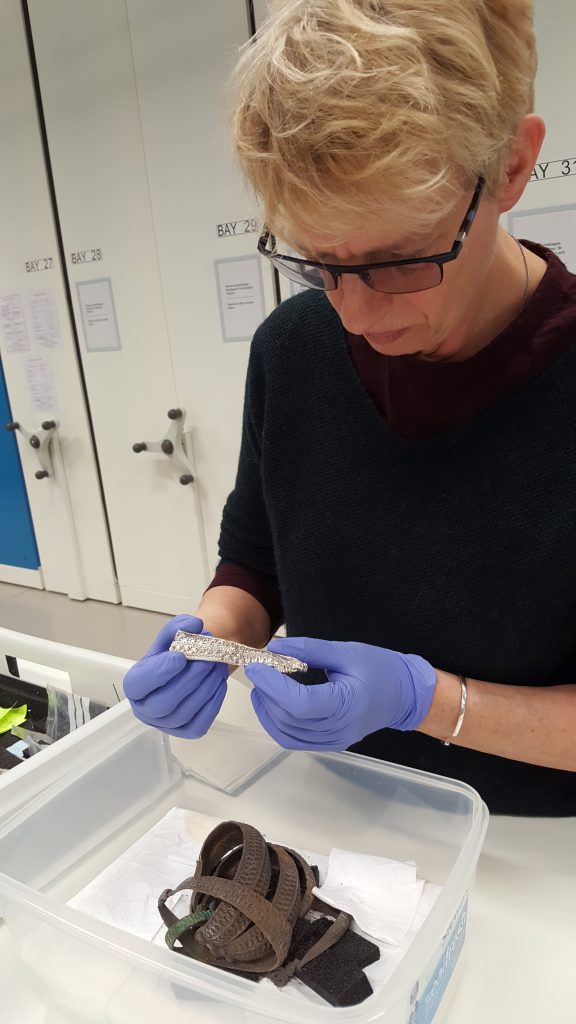
Simone ten Hompel examining artefacts from the Galloway Hoard. 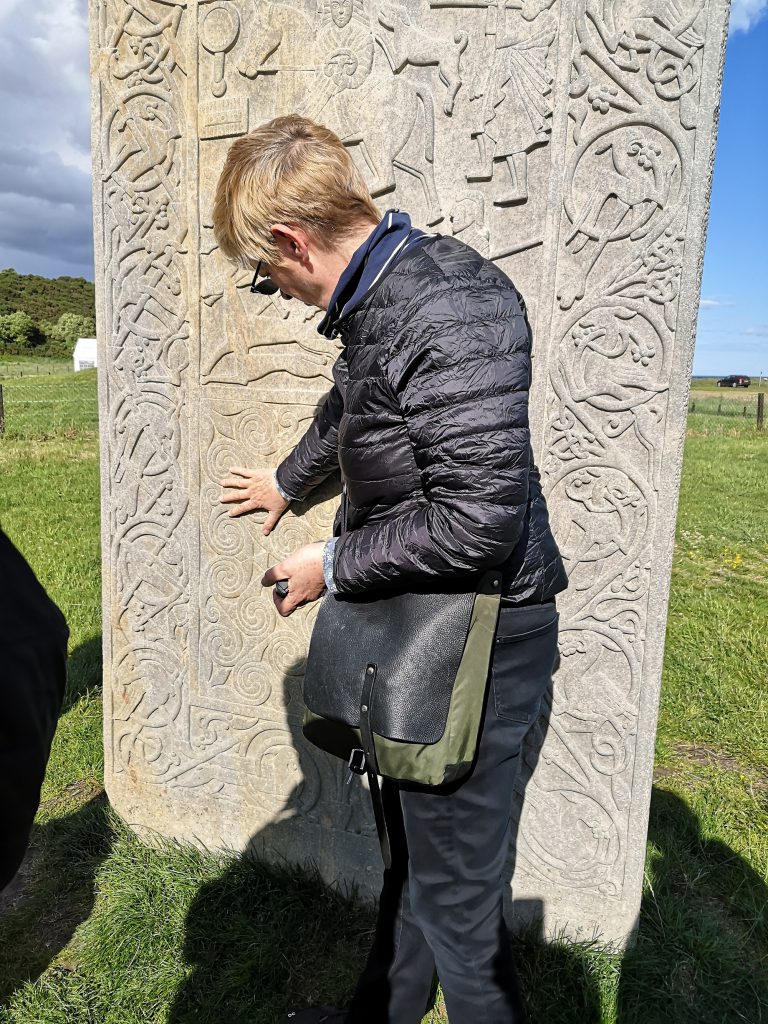
Feeling the detail of the carving on the recreated Hilton of Cadboll Stone. 
Getting a closer look at the artefacts at National Museums Collection Centre.
Working alongside Adrián but also Mary Davis within our Artefact Conservation team, who is currently conserving the Galloway Hoard and Dr Martin Goldberg, Principal Curator of Medieval Archaeology, who is heading up the team working on the project; she helped them to understand the complexities of the craftmanship that was employed in the creation of these works.
Explaining what tools and techniques may have been used as evidenced by the marks seen on the artefacts. And how much of this is still part of the craft of silversmithing and metalworking today. Teaching them how to visually identify the tell-tale signs of recycling of metals and silver within artefacts, by explaining to them how the different colours and textures of silver in the St Ninian’s Isle Hoard look yellow from alloying with gold, while others have the distinctive green patina of copper.
In some cases, this is because Pictish smiths experienced a shortage of silver around AD 800, stretching the metal to its limit by diluting with other metals. But Simone also pointed out how alloying silver to achieve different surface textures, hardness and other properties shows mastery of the medium as much as a lack of resources.
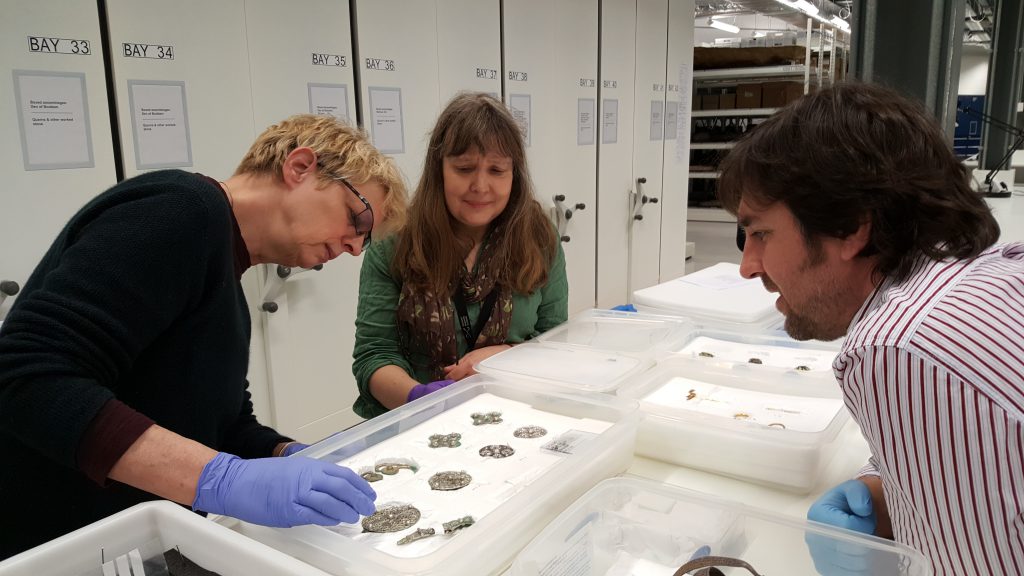
Simone with Mary Davis, Artefact Conservator (Galloway Hoard), and Dr Martin Goldberg, Principal Curator of Medieval Archaeology viewing part of the Galloway Hoard within the stores at the National Museums Collection Centre.
For Simone to fully understand the history of what shaped this land and the creation of these objects, she felt she also needed to physically explore Scotland beyond the walls of the Museum, and visit the sites where many of National Museums Scotland’s Viking-age objects had been excavated.

Simone’s birds eye view flying into Orkney © Simone ten Hompel. 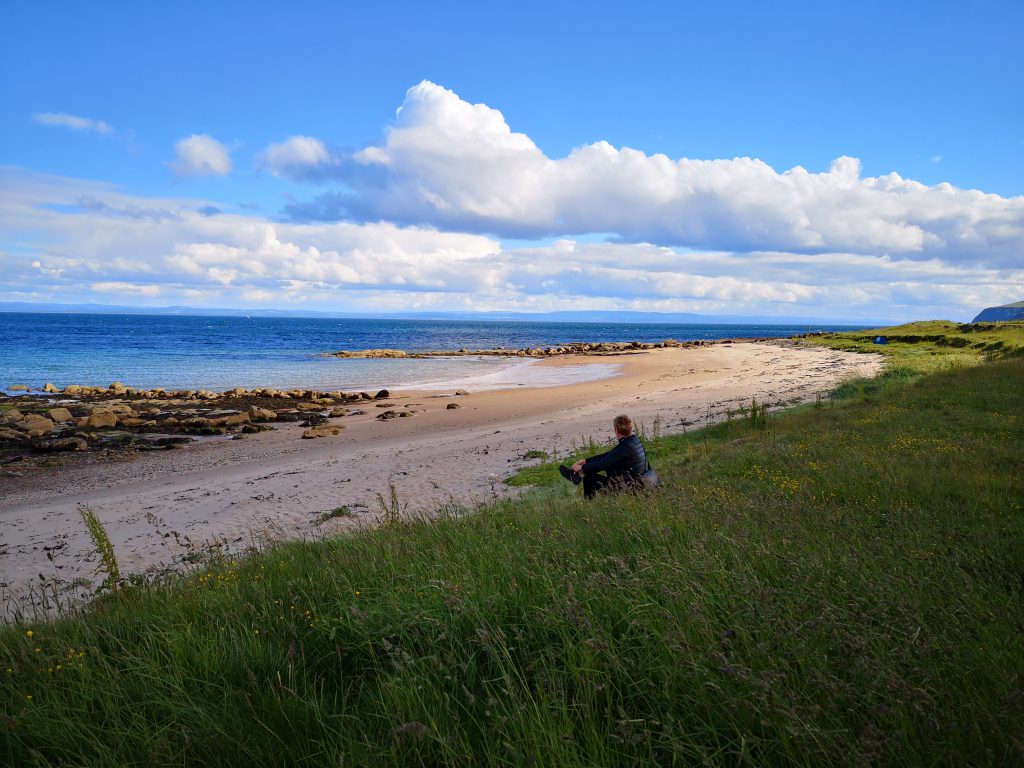
Simone sat looking out to the Moray Firth in the bay just below Glenmorangie House © Sarah Rothwell
She chose to travel north to Orkney last summer, where she met with archaeological experts like David Griffiths who excavated at the find spot of the Skaill Hoard. With their help, she was able to visit sites few tourists get to see, like the subterranean chamber and Iron Age smithy of Mine Howe. Simone says for her this was a particularly moving experience which brought her in touch with the rituals surrounding metalsmithing in the ancient past. Being enclosed within this space, cut off from the contemporary world, even for just a moment, she experienced what it must have been like to work within this enclosed space, touch stones which were laid so long ago, smell the earth and the damp, and be close to her fellow metalsmiths through the millennia.
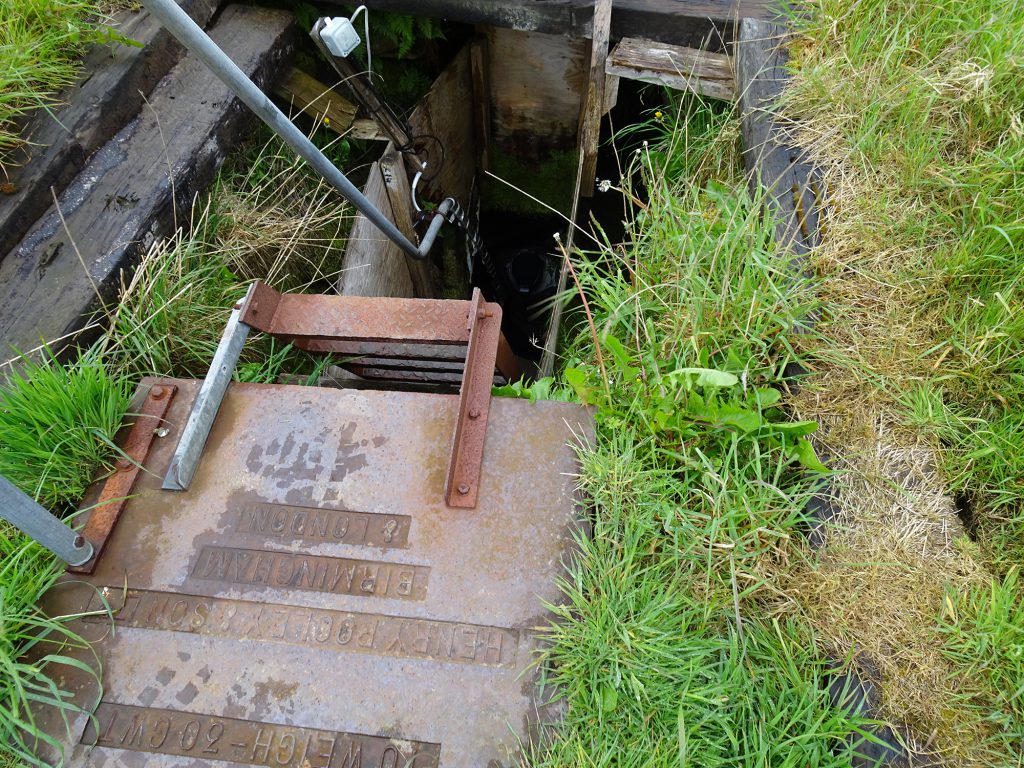
Waiting to descend into Mine Howe © Simone ten Hompel 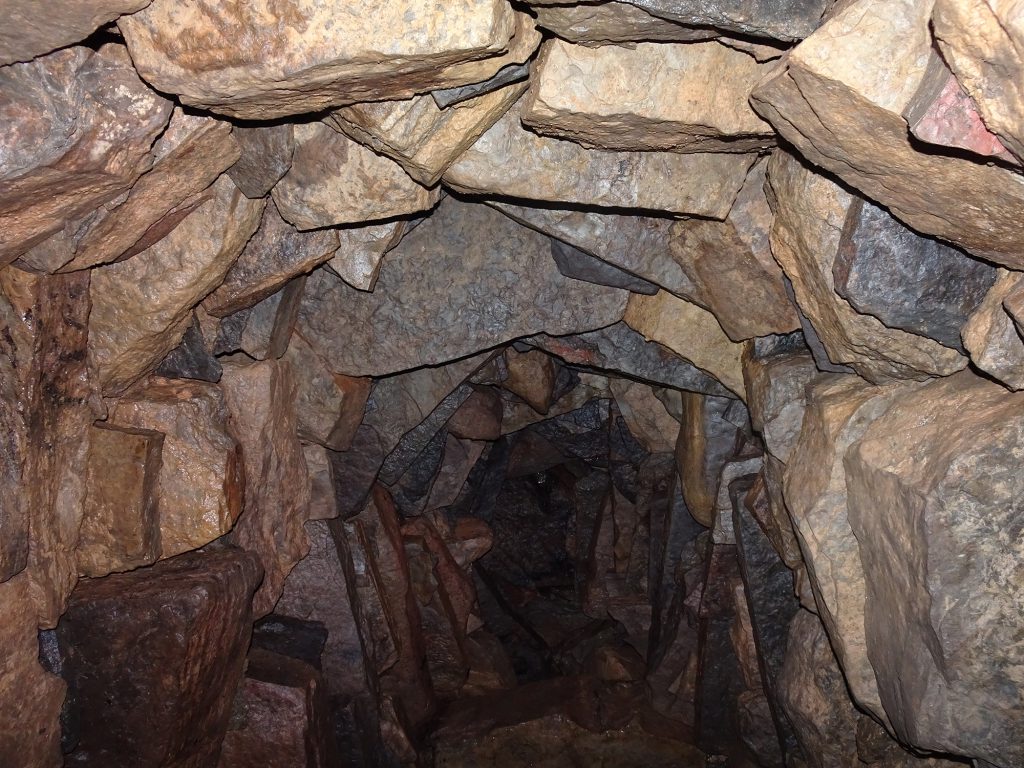
The chamber within Mine Howe © Simone ten Hompel
Simone in her own words came to the Commission as an “outsider”, with no preconceptions of what Scotland is, and how it was formed. As a metalsmith for over 40 years, yes, she has her own knowledge and understanding of the material. But she did not have any prior knowledge of the pieces that were created in this period. For her this this was all new, and she has approached the Commission with a fresh and unbiased outlook; embracing and absorbing all she was given; and allowing her full imagination to explore and create a work of metal art which evokes this period of Scottish history and consolidates all she has learnt from this experience.
When discussing how she approached the research and development of the Commission, Simone likes to quote Albert Einstein, who stated:
“Imagination is more important than knowledge. For knowledge is limited, whereas imagination embraces the entire world, stimulating progress, giving birth to evolution”
The resulting artwork, coordinate explores Scotland’s journey through time – it’s changing landscape and the continual rediscovery of its past. Its form with its three components, is an abstract interpretation of the land. And its surface treatment balances the colours and textures of many different metals beyond silver which were important to metalsmiths of the ninth to twelfth centuries.
Its title refers both to her time as an outsider getting her bearings in Scotland, as well as finding her way around the museum building itself. It also invokes the collaboration between the worlds of craft, design, archaeology and museum practice.
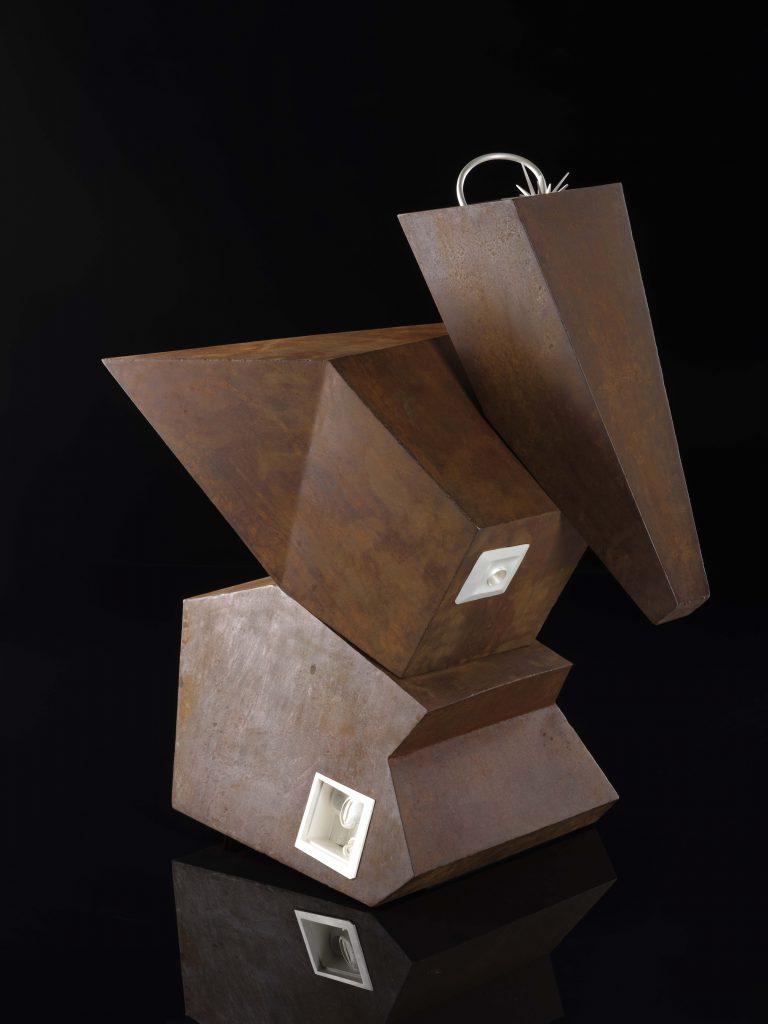
coordinate by Simon ten Hompel, London, 2020 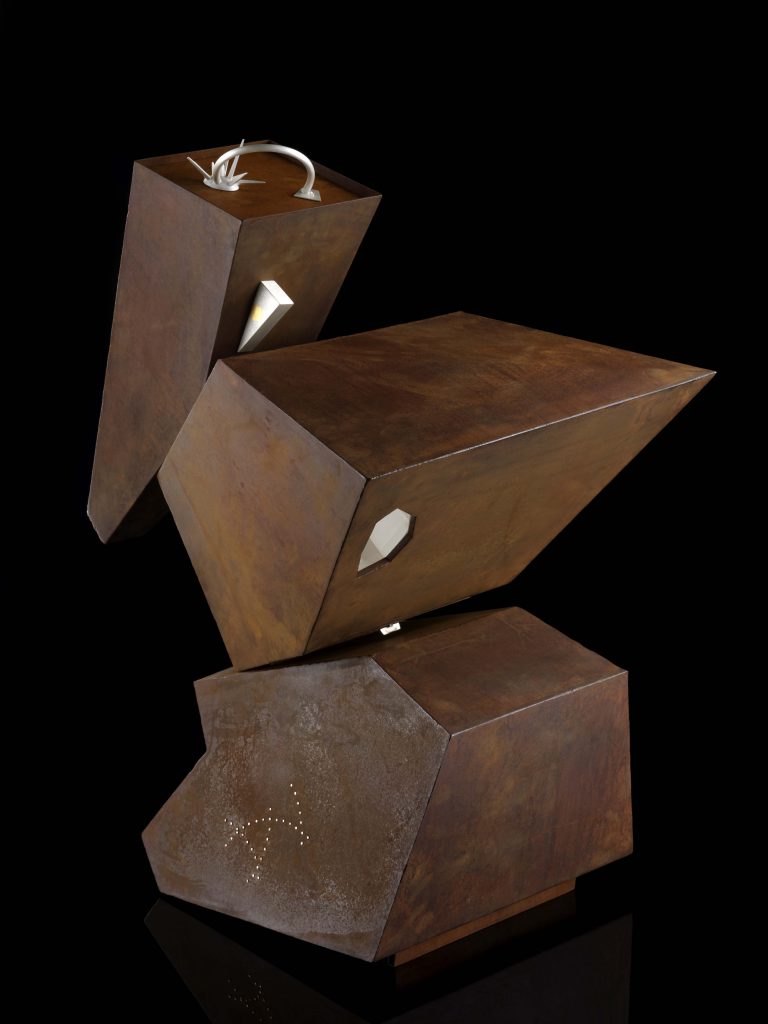
coordinate by Simon ten Hompel, London, 2020
The work also features a few subtle nods to the early medieval metal artefacts Simone came into contact with during her time here researching the collections of medieval artefacts. For instance, the lower chamber is her interpretation of our Museum cases, with some of the objects she first encountered here in the Museum. Within its confines include a small section of rings that represent the Pictish silver chain from Traprain Law that were created during the shared knowledge exchange workshop at Glasgow School of Art.
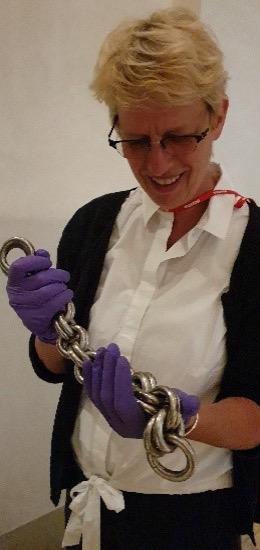
Simone handling one of the Traprain Law chains. 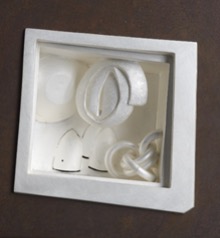
Detail of the lower compartment in coordinate which features the chain she created at GSA workshop.
And on the terminal, there is a spikey thistle head that relates back to her first encounters with Adrian and the Skaill Hoard.
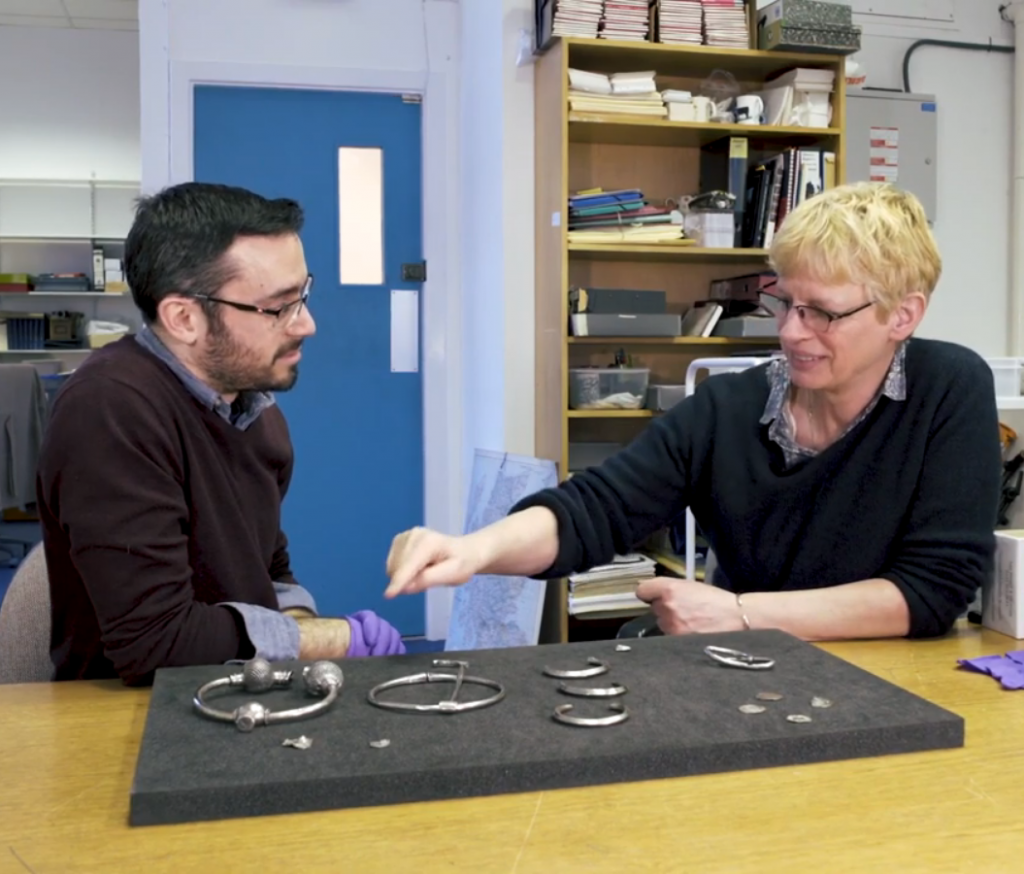
Simone pointing to the thistle like beads on one of the Skaill Hoard torques. 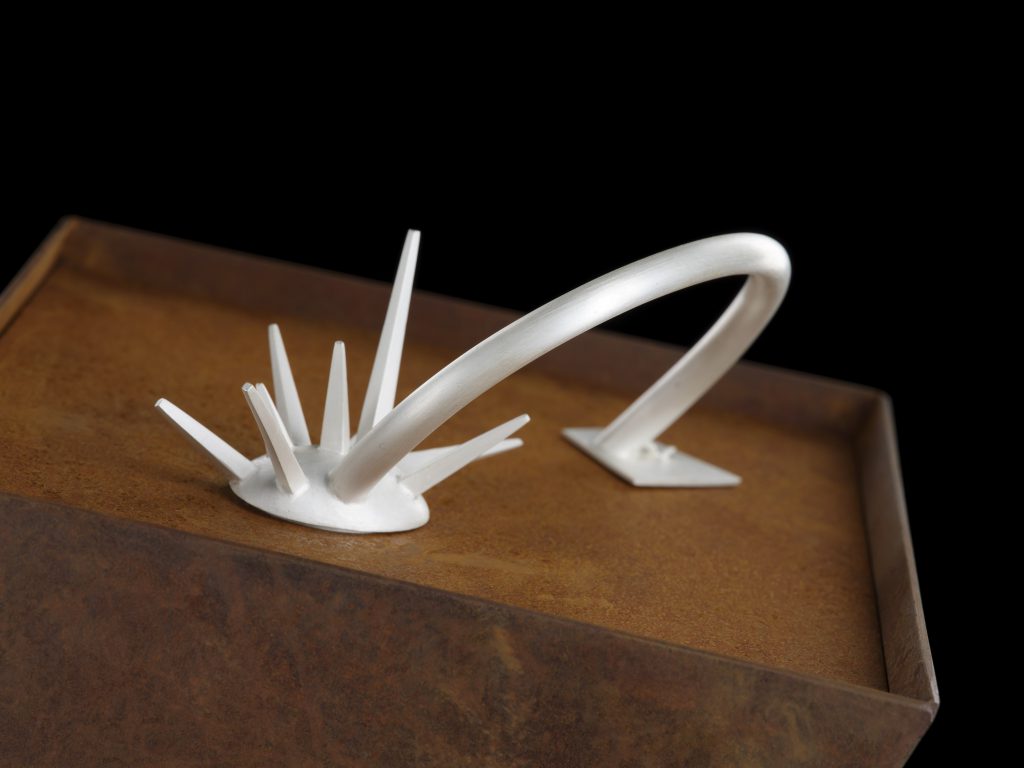
Detail showing Simone’s abstracted spikey thistle head at the top of coordinate.
There also is a direct reference to the benefactors of the Commission. In the upper section an emerging facet of silver with a golden orb is seen. Its placement is specific as it is roughly where Tain is on the map, the home of Glenmorangie. The form of the facet is a section of the Cadboll Stone which was found close to Tain, and where the Signet design for their logo is taken from. And the golden orb is the dram of whiskey we all shared when we travelled north together to Glenmorangie House to select this very piece.

coordinate deserves close inspection as it changes in appearance when viewed from different angles. The hidden compartments evoke the chance discoveries of silver objects buried in the ground. Seemingly untouched by time, they reach out from the ancient past in order to speak to us today. Simone intended for viewers to walk around the piece and be tempted to peer into it, imagining what you might find inside.
The work now on display within Making & Creating is a fitting monument to the relationship that have been developed between the artist, Museum and Glenmorangie. A legacy that continues to grow and does not stop with the unveiling of the Commission. Simone was so inspired by her experience and her time here at the Museum and with the artefacts, that her new body of works featured in the exhibition 3on at the Kunstpavillion im Alten Botanischen Garten, Munich as part of the Internationally renowned Munich Jewellery Week celebrations directly responds to her time in Scotland.
I would like to extend my personal thanks to Simone for her enthusiasm and openness throughout the Commission. She has embraced the Museum whole heartily, allowing us all who have worked on this project, and beyond, to benefit from her knowledge and guidance.
